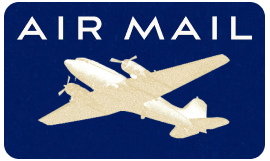The first photographic exhibition by the Orient Express Endowment Fund distinguishes fact from fiction as it examines the evidence of this near-mythical service, which in the 19th century opened up routes between Europe and the Middle East and in the 20th became the setting for Agatha Christie’s mystery novel and, later, Sidney Lumet’s film adaptation.
In 1867, Georges Nagelmackers, the ambitious son of a Belgian banker, had the idea of creating a transcontinental-travel company in Europe. In America he had experienced the Pullman sleeping cars, which offered comfort—and style—to passengers crossing the country by train. Establishing the Compagnie Internationale des Wagons-Lits (CIWL), Nagelmackers negotiated with rail companies and nation-states to enable seamless travel on a single train between Paris and Constantinople (now Istanbul).
The service began in 1883. The direct, regular, and luxurious journey took 81 hours of travel, with speeds of between 43 and 87 miles per hour, unheard of at the time. Specially designed carriages included individual sleeping quarters, dining rooms, and sumptuous lounges. In 1930 the route expanded, introducing regular weekly services to Baghdad and Cairo.

By 1934, when Christie’s Murder on the Orient Express was first published, the train had achieved such celebrity, and held such a position in the collective imagination, that Christie was able to situate the story on it with minimal description. People who had never left their hometowns understood exactly what she was writing about, down to the finer details.
Christie was a regular traveler on the service. Her second husband, Max Mallowan, was an archaeologist, and she traveled regularly to the Middle East to visit him, observing other passengers during her journeys and taking down notes on her portable typewriter.
If her novel is to be believed, on a good day the average passenger list in winter would include businessmen, glamorous young Eastern European diplomats, the odd Russian princess, a member of the Mafia in deep disguise, and a motley array of adulterous retired colonels and British governesses working in Baghdad—all of them seething with murderous intent.
The reality was a little more prosaic, as demonstrated by the documents, photographs, and memorabilia included in “Orient-Express & Cie,” part of the Rencontres d’Arles photography festival on through September 26.

Accidents were rare on the service, but in 1929 the train got stuck in deep snow 60 miles outside of Istanbul. After five freezing days of deprivation and tunneling, the train was finally freed, and the passengers signed a document confirming the exemplary behavior of the staff. This story captured Christie’s—and the world’s—imagination, and partially inspired her novel. The signatories appear to be almost all male and European (and, notably, included the French ambassador to Turkey). Among the addresses were Constantinople, Vienna, and Naples.
The real Orient Express was used mostly for business rather than pleasure. The reliability of the service, the staff elegant in smart livery, offset any disturbance caused by the rattling of fine china and, more seriously, the endless political turmoil in the Balkans, which the train crossed on its journey east.
As the mighty Orient Express rumbled through the night, conversation under the rosy Lalique lamps in the first-class carriages was more likely about the Realpolitik of the declining Ottoman Empire than about plots between kidnappers, murderers, and showgirls, as Christie would have us believe.
However, it’s not hard to believe that for an experienced grifter with interests in both the East and West, the Orient Express would provide a golden opportunity. A full 81 hours of close confinement with powerful and wealthy fellow passengers? A cozy 81 hours in which to charm, insinuate, and dissimulate? Sounds like the perfect plot for the regular lady traveler who liked to type the hours away in a corner seat. —Sarah Hyde

 Discover
Discover